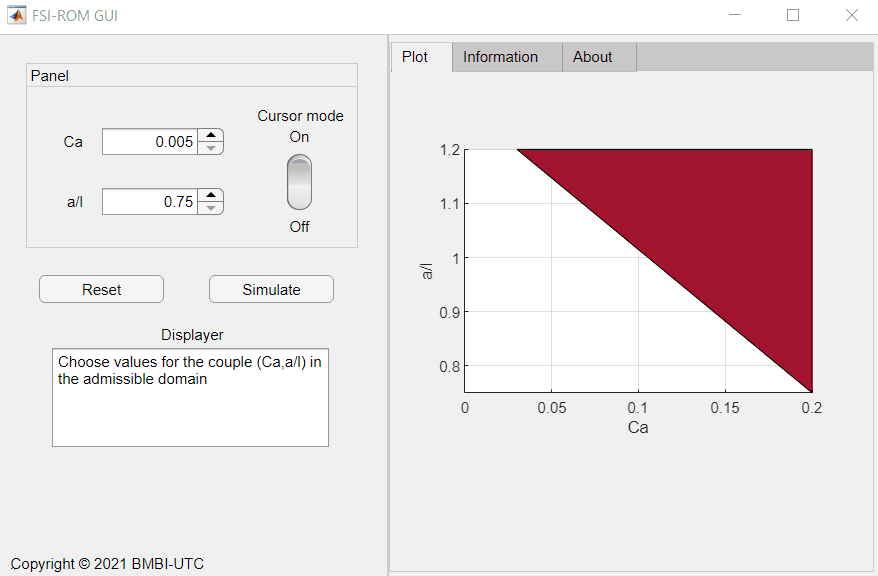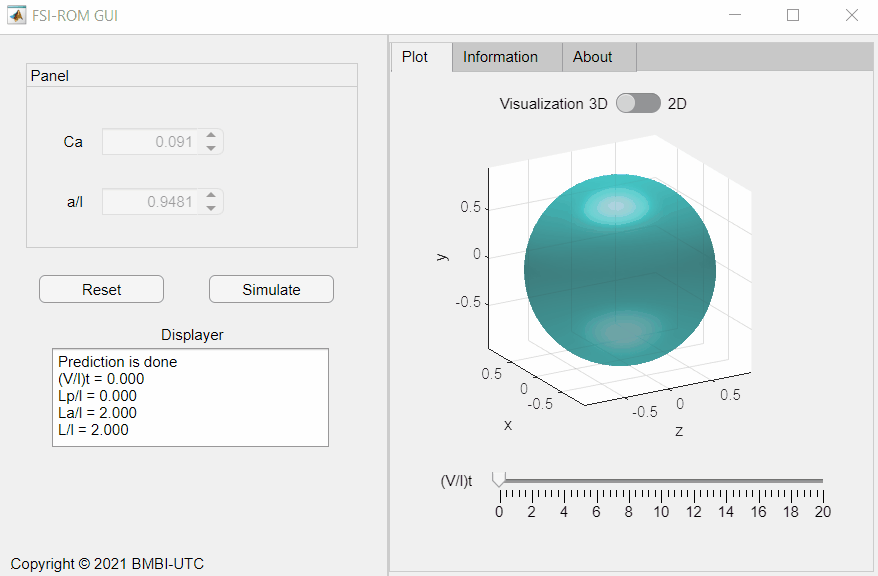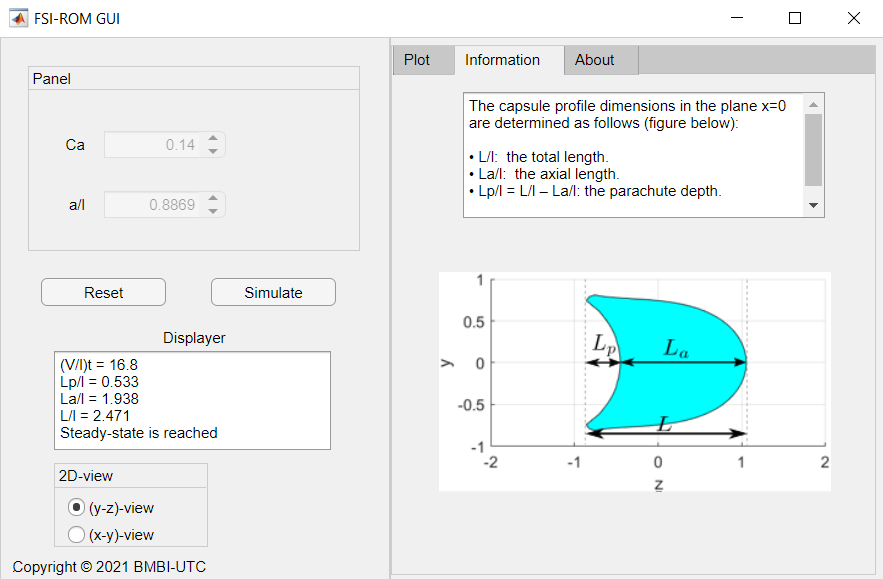Real time prediction of capsule dynamics in microchannels: Tutorial
In the following, we explain how to use the MATLAB software tool
-
Choose a capillary number Ca and a confinement ratio a/l in the white zone shown on the right of Figure 1. Entering these parameters can be done either using the spinners or by activating the cursor mode switcher and clicking directly with the mouse cursor on the parametric space.
The selected configuration can only be in the white zone, as it is the region of the parametric domain, where a capsule obeying the Neo-Hookean law reaches a steady-state shape.
- Click on "Simulate".
- Once the “Displayer”, located at the bottom left of the screen, indicates the end of the calculation, the 3D capsule shape appears automatically on the right (in its initial spherical shape). It can be viewed at any other time using the timer slider located below the figure. One can also visualize its cross-cut profiles by switching the above cursor from 3D to 2D (see figure 2).
- In the 2D view, one can visualize the cross-cut profiles of the capsule by choosing the (y-z)-view or its transverse view by selecting the (x-y)-view from the radio buttons, located below the “Displayer” (figure 3).
- L/l: total length.
- La/l: axial length.
- Lp/l = L/l – La/l: parachute depth.
- To launch a new simulation, click on the “Reset” button.

Figure 1: Animated figure that illustrates the first and second steps of the tutorial.

Figure 2: Animated figure that illustrates the steps 3-5 of the tutorial.
As shown in Figure 2, the “Displayer” provides, at each chosen time instant (V/l)t, the values of the geometrical parameters defined in figure 3:

Figure 3: Definition of the geometrical parameters (shown on the capsule profile in the plane x = 0), which are characteristic of the capsule deformation).
Acknowledgements
This project received funding from the European Research Council (ERC) under the European Union’s Horizon 2020 research and innovation program (Grant agreement No. ERC-2017-COG - MultiphysMicroCaps ).
If you find this tool useful in your research, please consider citing our paper:Boubehziz T., Quesada-Granja C., Dupont C., Villon P., De Vuyst F., Salsac A.-V. A Data-Driven Space-Time-Parameter Reduced-Order Model with Manifold Learning for Coupled Problems: Application to Deformable Capsules Flowing in Microchannels. Entropy. 23, 1193 (2021).
References
Chu T.X., Salsac A.-V., Leclerc E., Barthès-Biesel D, Wurtz H., Edwards-Lévy F.
Comparison between measurements of elasticity and free amino group content for
ovalbumin microcapsule membranes: discrimination of the cross-linking
degree. Journal of Colloid and Interface Science. 355, 81-88 (2011).
Hu X.-Q., Sévénié B., Salsac A.-V., Leclerc E., Barthès-Biesel D.
Characterization of membrane properties of capsules flowing in a square-section
microfluidic channel: effects of the membrane constitutive law. Physical Review E.
87, 063008 (2013).
Quesada C., Villon P., Salsac A.-V.
Real-time prediction of the deformation of microcapsules using Proper Orthogonal Decomposition.
Journal of Fluids and Structures. 101, 103193 (2021).
Wang X.-Y., Merlo A., Dupont C., Salsac A.-V., Barthès-Biesel D.
A microfluidic methodology to identify the mechanical properties of capsules: comparison with a microrheometric approach.
Flow. 1, E8 (2021).